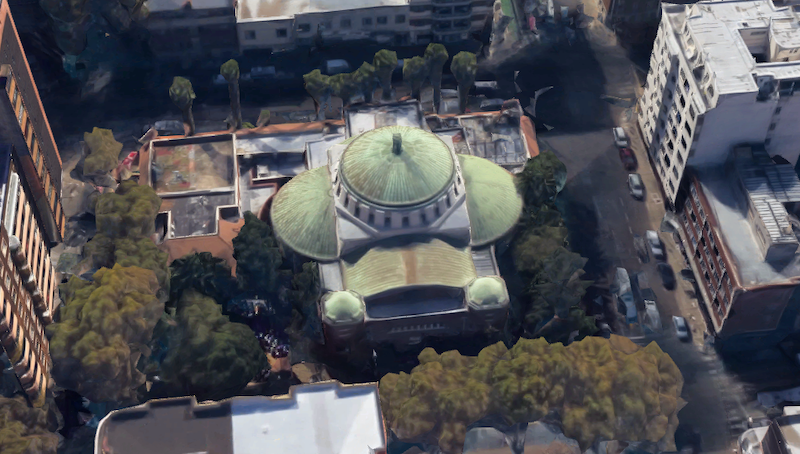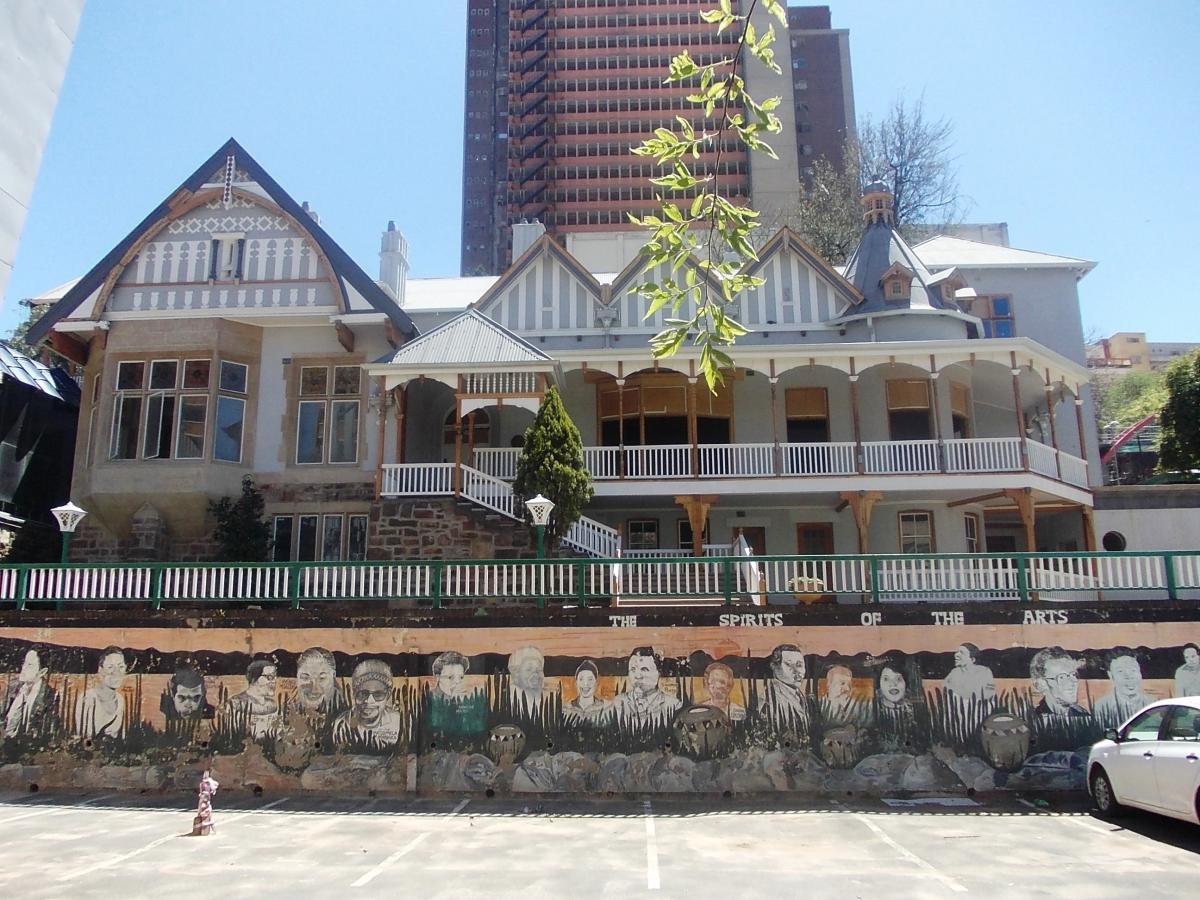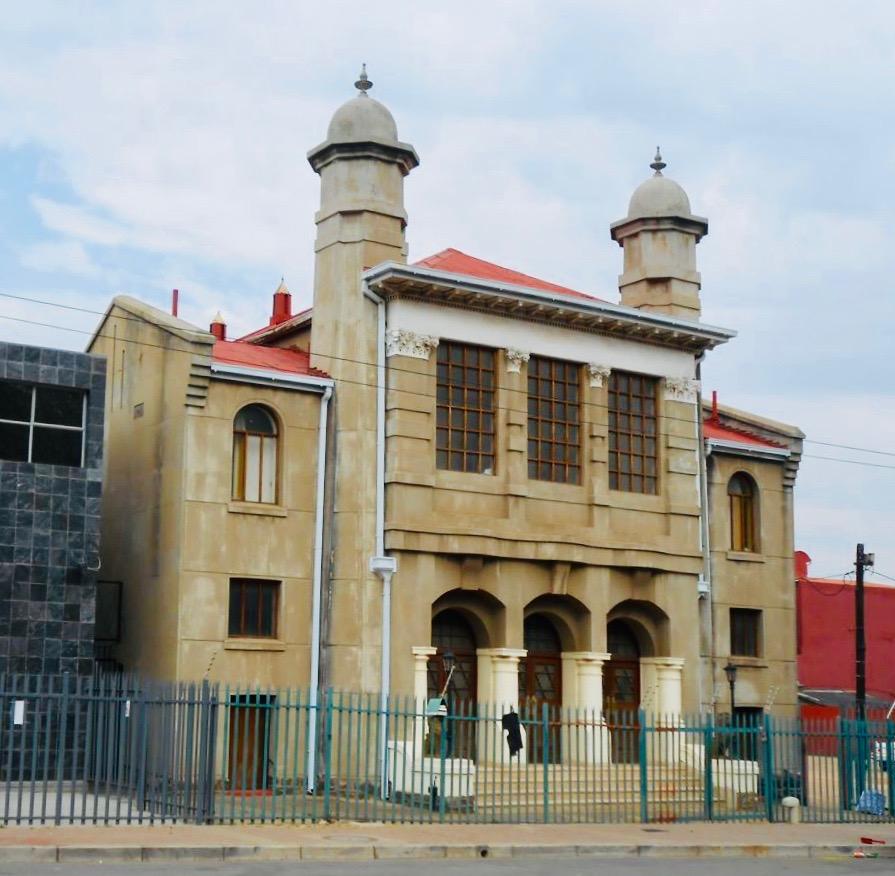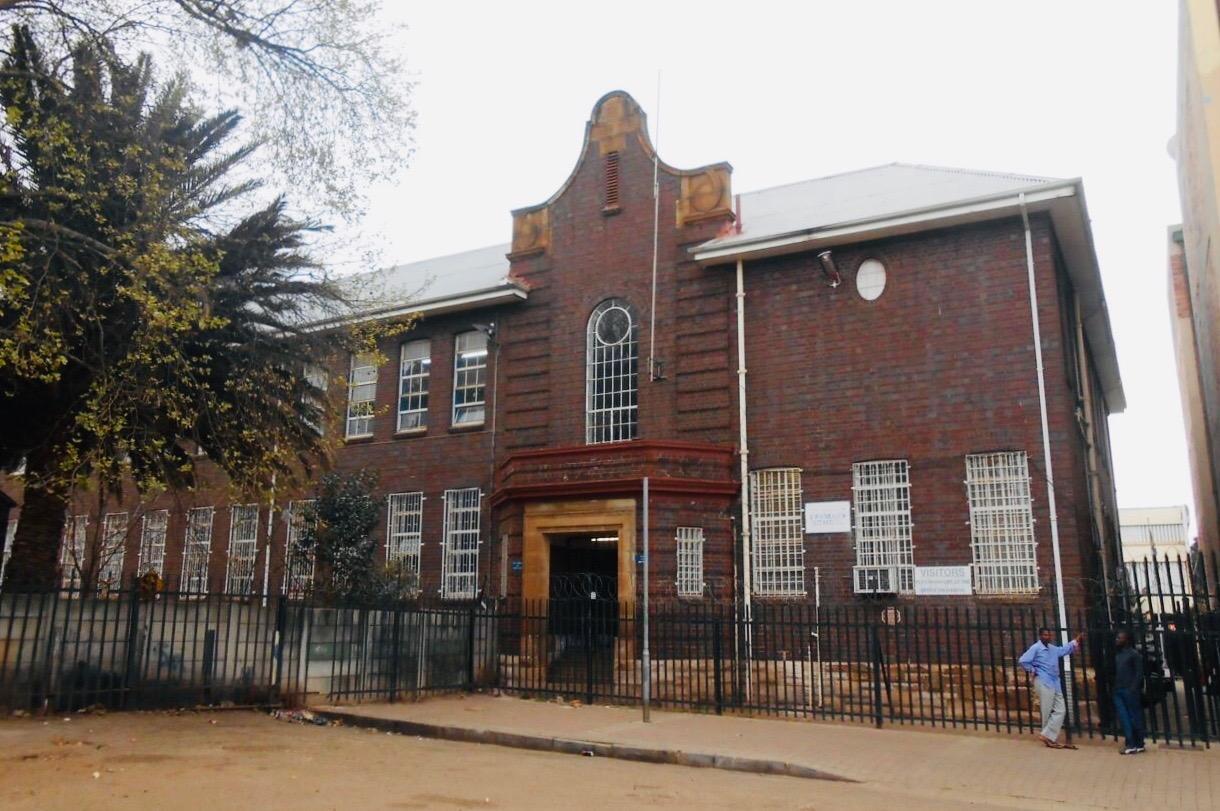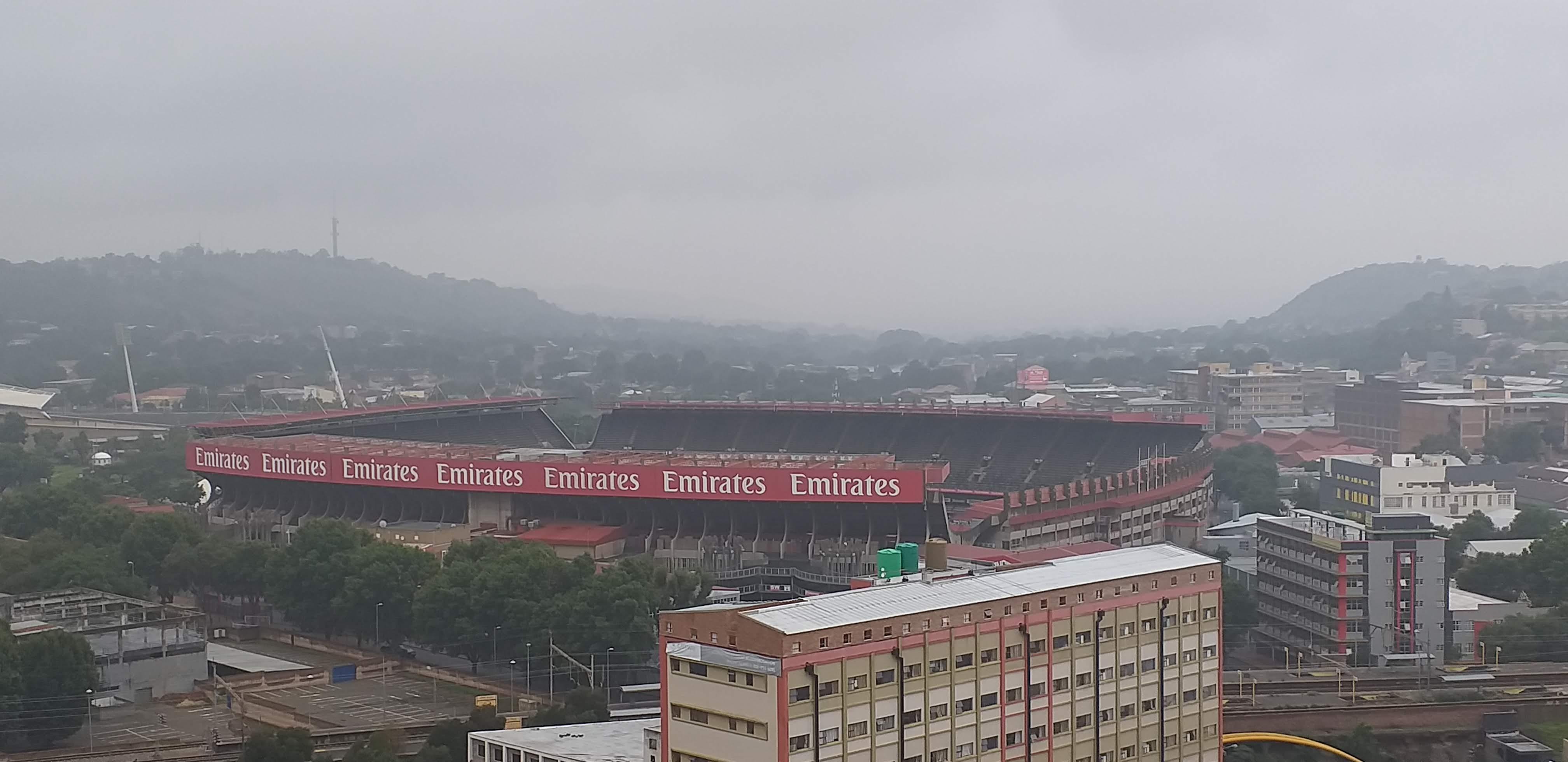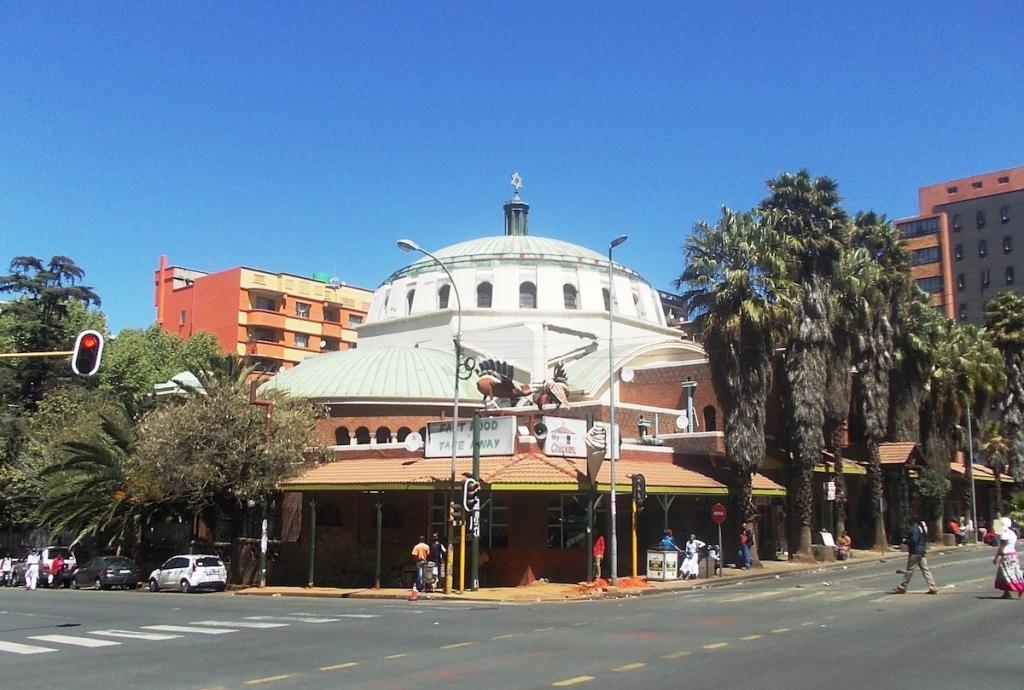
Disclaimer: Any views expressed by individuals and organisations are their own and do not in any way represent the views of The Heritage Portal. If you find any mistakes or historical inaccuracies, please contact the editor.
In the article below, journalist Lucille Davie unpacks some of the history of the landmark Wolmarans Street Synagogue. The article was first published on the City of Joburg's website on 17 March 2003. Click here to view more of Davie's writing.
The Great Synagogue in Hillbrow lives again after being closed and shuttered for nine years. It’s used now as a Rhema church, and every Sunday is filled with the inspired singing and hand clapping of 500 congregants of Pastor Thivha Lidzhade.
Lidzhade, head of the Bethesda Bible Church, says his challenge is to “clean Hillbrow and turn it to Jesus”. He started the church in 1997 in Germiston with 12 people, and today 500 people, mostly from surrounding Hillbrow, Doornfontein and Berea, and as far as Soweto, Pretoria and Tembisa, come every Sunday and offer their praises to God.
It’s not surprising that Lidzhade and his congregants feel inspired in the building – it is a magnificent piece of architecture. As you enter the tall-domed structure, you’ll be drawn upwards into the glorious soaring space, offset with a gold Star of David in the middle of the dome. A set of leaded-glass arched windows running around the base of the dome lights the space.
It’s a huge dome, supplemented by four supporting half domes, within which the women’s balconies nestle. The ground floor consists of a charcoal painted wooden floor in small graded steps, now stripped of its original wooden benches.
It was designed and built by Swiss architect Theophile Schaerer in 1914 on the border of Doornfontein, a suburb that was predominantly Jewish. The synagogue takes a whole block – its frontage is on Wolmarans Street, surrounded by Claim, Quartz and Smit streets. It originally seated over 1 400 people – 880 men, and 550 women.
The Synagogue from above (Google Maps)
Schaerer used as inspiration for the Great Synagogue the wondrous Byzantine Haggia Sophia mosque in Istanbul. The mosque was originally built as a Christian church in the 6th century, but when the Turks captured the city in 1453 it became a mosque.
Lidzhade has ambitious plans to buy the whole block which includes the Synagogue, a pub and a row of shops, and turn the pub into a “Gospel club”, and create a community centre with a clinic, a crèche, a training area (IT, sewing, home-based Aids care), and a feeding scheme.
”Around 70% of the congregation are unemployed, and most are under 30. A lot of churches run away from Hillbrow, but we want to change Hillbrow, with the Lord’s help,” Lidzhade enthuses.
He has plans for active marketing, involving sponsorship, and holding concerts in the hall, attracting gospel artists, providing an “alternative to nightclubs”. He plans to prove that Hillbrow is not a place of “just prostitution and gangsterism, but also Jesus”.
Joburg’s early synagogues
The Great Synagogue is the third Johannesburg synagogue. The first synagogue was built in President Street in 1889 and served the community until 1926 when it was demolished. Before 1889, Jewish services were held in the Rand Club, the town’s largest venue at the time, big enough to accommodate the 500 worshippers.
In the meantime another synagogue, known as the Park Street Synagogue, was built on the corner of De Villiers and Joubert Streets, near the Park Street Railway Station. It was inaugurated by President Paul Kruger, who respectfully but unthinkingly took off his hat when he entered the building, against the strict Jewish custom of men covering their heads in a synagogue.
The Park Street Synagogue was sold in 1912 and demolished, to make way for the new railway station. The Great Synagogue was then built and served the community until 1995, when escalating crime in the area and lack of parking drove the congregants into the suburbs.
In 2000 the Great Park Synagogue was opened in Oaklands, a replacement of the Great Synagogue. The seats, chandeliers, carved wooden noticeboards, and the bimah (pulpit) were removed and now serve the community in this shul, which is a small-scale replica of the original, a handsome building with its tall dome but not nearly as grand as the Great Synagogue.
The Great Synagogue has the distinction of being the first synagogue in Johannesburg with its Ark facing north, towards Israel. The earlier synagogues faced east, a custom from the first congregants who were immigrants from eastern Europe. Since the building of the Great Synagogue in 1914 all synagogues in the city face north.
Doornfontein
The Synagogue served the lively nearby Jewish community of Doornfontein up until the 1940s. Doornfontein had originally been the suburb of the wealthy before the Anglo Boer War. The Randlords built their mansions mostly along Saratoga Avenue – John Dale Lace, George Albu, Sam Height, Friedrich Eckstein, Theodore Reunert who built Windybrow, the sole survivor of the era. But, when the wind blew, the dust from the mine dumps made life very unpleasant in Doornfontein. By the end of the War, the Randlords had discovered Parktown, and most (except Reunert) moved en masse to the ridge north of the town.
Windybrow (The Heritage Portal)
Several synagogues were built in Doornfontein. Besides the Great Synagogue, the Lion Shul in Harrow Road still survives and is the only active synagogue in Doornfontein. It’s a charming building, on a much smaller scale than its neighbour down the road. It gets its name from the two impressive gold-painted cast iron lions at its entrance.
Lion Shul (The Heritage Portal)
A homely, cosy synagogue, it’s painted in pleasing pale yellow and white, offset by dark wooden pews, a rich red carpet running down the centre, and three small shallow glass domes in the ceiling. The wooden women’s gallery around three sides adds to its cosiness. It has a beautiful arched stained glass window above the bimah, portraying the 10 Commandments in Hebrew. Its congregation still comes from the northern suburbs, mainly for sentimental reasons, and on festival days the synagogue is packed.
Beit Street used to be the commercial hub of this Jewish suburb, crowded with kosher butcheries, shoemakers, tailors, blacksmiths, carpenters and barbers, interrupted by bicycles, horses and carts or trams making their way down the middle of the street. Hawkers and pedlars crowded the pavements, with live chickens, eggs, ice and coal on sale.
Several Jewish schools were built, and one, the Jewish Government School, now the IH Harris Primary School in Davies Street, still goes strong. Yiddish used to be the only language heard in the playground. It has carved wooden honours boards going back to 1904 in its small but friendly school hall. Its large brass school bell hangs five metres up the wall of one of the two quadrangles, with a chain hanging down, within easy reach of children’s hands.
IH Harris School (The Heritage Portal)
It was a richly-textured, inspired community, but by the end of the 1960s the 22 000-odd members had started to move into the northern suburbs. Today Beit Street consists of closed shop fronts, small factories and light industries south of it, the ugly concrete face of the Witwatersrand Technikon, opened in 1986, the fortress-like walls of the Technical College, and the sprawling complex of the Ellis Park sports stadium.
Ellis Park from above (The Heritage Portal)
Some of the jacarandas and plane trees that used to line the streets of the suburb still exist in the grounds of the Technikon, together with a row of charming houses in Louise Street on the campus.
The Voice
In stark contrast to the Great Synagogue is the newly-built The Voice pub alongside it.
Open for two years, The Voice and its adjoining 11 small shops are the brainchild of Michel Rubinek, also owner of the Synagogue. The entire project is called The Voice of Peace, and says Rubinek, the name comes from the term “I want my voice to be heard”, an idea for a TV talk programme, still in the pipeline.
The Voice pub is a community effort – the murals and accessories like wall light fittings have been produced by local artists.
“I want to show people that the people of Hillbrow are not less grand than the people of Sandton,” says Rubinek.
The pub is a pleasing place to spend time in – it’s finished with red face brick, the wooden ceiling struts have been left visible, with long wooden benches on brick tiled floors. The south side is open with a wooden balcony overlooking a small car park, and several large palm trees.
Rubinek insists on only African music being played, and the cuisine is strictly African too. “You won’t hear rap or R & B here – local is lekker.”
Patrons are 92% black, but plans are afoot to broaden the customer base.
The pub is being extended, creating an outdoor deck over the car park, and will be able to accommodate 300 people. Rubinek hopes in future to attract tourists to the spot.
Just outside the pub, in Quartz Street, is The Braai & Meat, a small outdoor restaurant, with happy customers tucking into pap and braaied meat. On the corner of Quartz and Smit Streets is the start of the 11 kiosk shops that Rubinek has built around the Great Synogogue, running to Claim Street.
They’ll filled with happy customers at The Laundry; the Isis Ice Cream parlour; Abet’s Hair & Beauty salon; Marlene’s Cosmetic Shop; Dumisane’s Nu Vision Computers; Percy’s Master Pies; Kumba’s The Locksmith, and on the corner of Claim and Smit Streets, the popular My Chicken eating house.
”This place was dead,” says Rubinek. He built the shops, put in a row of mature palm trees, and brought in a security team, with five security guards each shift, accompanied by two dogs, patrolling the area of shops.
Across the road from the pub in Quartz Street is a block of flats for pensioners. This used to be a “gun alley”, says Rubinek, where people were shot and robbed in the streets. Pensioners couldn’t walk the street. Now they happily come out into the street. When the pub has live music, they respect their aged neighbours – the music starts at 2pm and finishes at 7pm.
Rubinek plans to integrate the synagogue with the pub. “People can get married in the church, and have their reception at the pub.”
He also wants the Synagogue to be used on a more regular basis, perhaps as an arts and culture centre.
The Voice and its shops form an island of creativity and energy in a high-risk, run-down area. Together with Lidzhade’s plans for a community centre, it may yet be the catalyst for rejuvenating Hillbrow.
Lucille Davie has for many years written about South Africa's people and places, as well as the country's history and heritage. Take a look at lucilledavie.co.za
Comments will load below. If for any reason none appear click here for some troubleshooting tips. If you would like to post a comment and need instructions click here.

